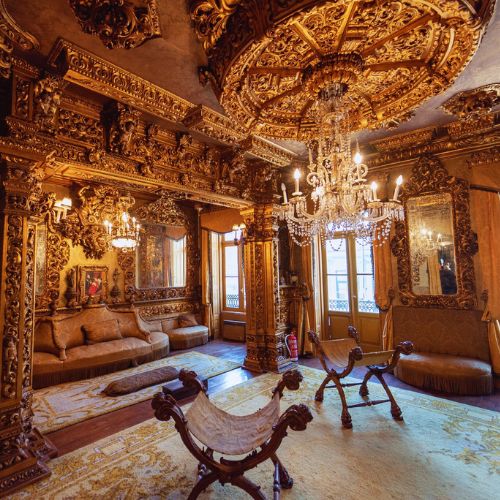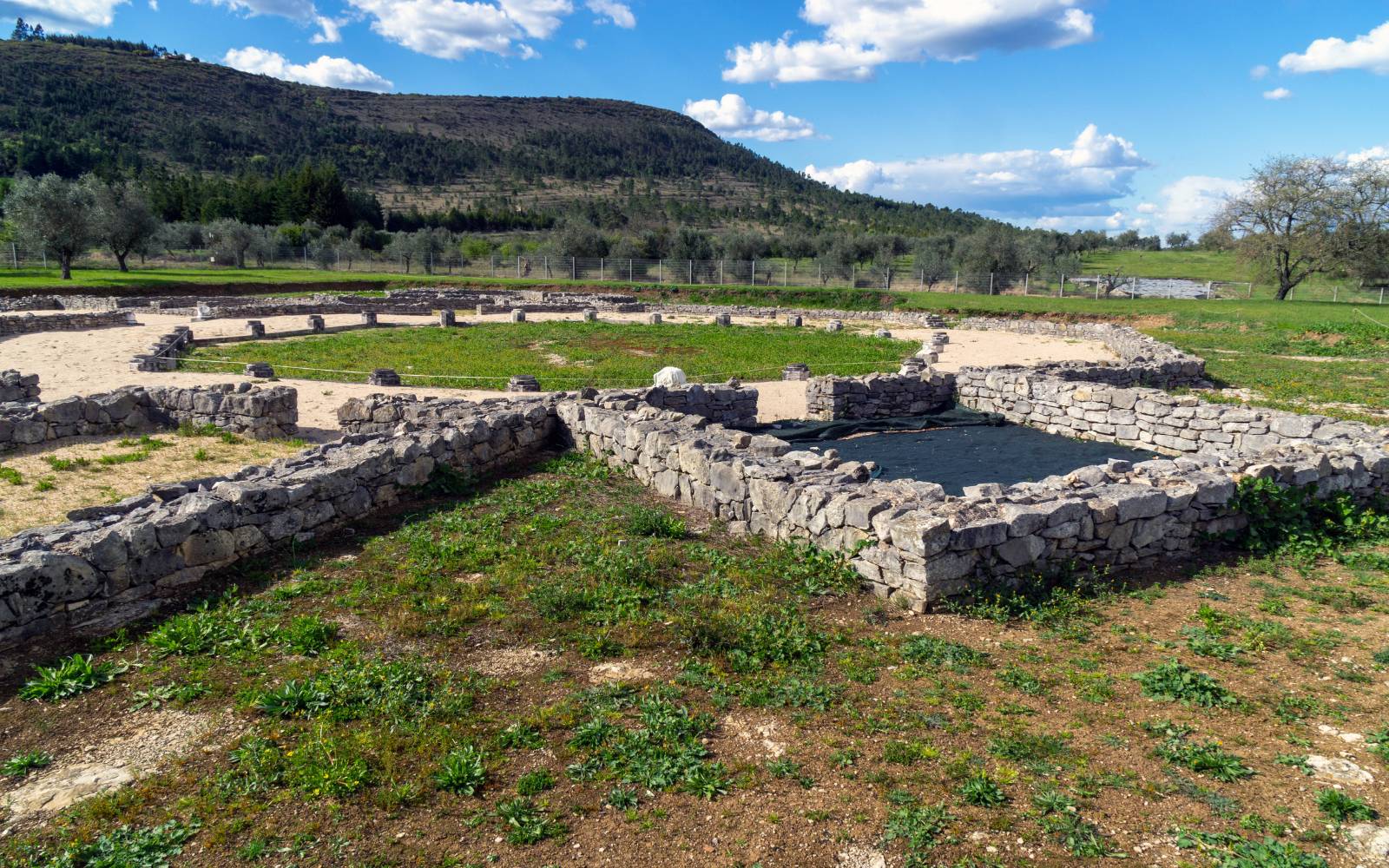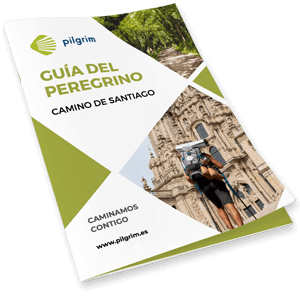Oporto
‹ Back to the stage
Oporto
- Residents: 237.559 aprox.
- Province:
Information
Get to know Oporto
Oporto is the second most important city in Portugal after the capital, Lisbon. Like the vast majority of cities has an extensive historical heritage, being declared a World Heritage Site by UNESCO.
Oporto is the starting point for many pilgrims who make the Camino; the credential can be obtained at the headquarters of the Cathedral. So the walker at this point will not lack anything.
Location
How to get there
The city is served by main roads such as the A-1, which connects Lisbon and Porto, the A-3 which connects Porto with the Galician border as well as the A-28 freeway, the A-4 which connects Matosinhos with Amarante and the A-41 which connects Porto with the Algarve. There are also several national, secondary and ring roads into the city.
If we want to reach the city by train from Spain, the fastest option is from Vigo, it takes just two hours and there are several daily lines. From any other point in the country the lines all go to Lisbon and then you have to take another one to Porto.
<pThe bus station offers regular lines from various points in Spain connecting the whole peninsula. It also has an airport with a wide network of airlines, both national and international. And finally, we can get to Porto by boat along the Douro River in a river cruise.
History / Culture
What to see
Puente María Pía
The Maria Pia Bridge is a bridge built between 1876 and 1877 that crosses the Douro River. It is considered the first arch bridge with railway access that managed to join the two banks of the Douro. This bridge is no longer in use since 1991, when the São João Bridge was built in parallel.

Puente do Infante
The Infante Bridge, also known as Infante Don Enrique Bridge, was built in 2003 with the intention of communicating Porto with Vila Nova de Gaia across the Douro River. As for its structure, it is completely built in concrete with an upper deck. In the center of the bridge, the lintel and the arch are mixed, thus forming a rectangular-shaped section.

Puente do Freixo
The Freixo Bridge is one of the bridges that connect Porto with Vila Nova de Gaia since its construction in 1980. It was built in order to minimize traffic jams on the Arrábida and Don Luis I bridges. As for its structure, the bridge is divided into eight spans and has eight lanes of traffic.

Puente da Arrábida
The Arrábida Bridge is one of the six bridges that cross the Douro River in Porto to communicate this city with Vila Nova de Gaia. It was built between 1957 and 1963 and at the time was considered the largest reinforced concrete arch bridge in the world. In 2013 it was declared a National Monument.
.

Plaza da Liberdade
The Liberdade Square is the most famous square in Porto, as it functions as a link between the old and the modern. Highlights in the center of it, the equine statue of King Pedro IV, which was built in 1862 and stands out for the ten meters it covers.

Catedral de la Sé
The Sé Cathedral of Porto is the most important religious monument of the city, as well as one of the oldest cathedrals. Its construction began in the mid-twelfth century following a Romanesque style. The works were not completed until some six hundred years later, as it underwent numerous remodeling, thus presenting Gothic and Baroque features.
EXTERIOR
The first element that stands out as soon as you see the cathedral is its immense facade, in Romanesque style, which gives it a fortress-like appearance thanks to its large twin crenellated towers. In general it has little ornamentation although it does highlight the rose window crowning the portico of the temple.

Palacio da Bolsa
The Bolsa Palace was declared a World Heritage Site by UNESCO. It sits on the ruins of a former convent belonging to the Franciscan order. Its construction began in 1842, but it was not inaugurated until half a century later, in 1891. Of neoclassical style, it has a central courtyard known as Patio de las Naciones (Courtyard of the Nations), which is covered by a glass structure that illuminates the palace. On the second floor of the building are different spaces, such as the Golden Room, covered with gold leaf, the General Assemblies Room and finally the most important, the Arab Room, whose construction was inspired by the Alhambra.

Museo Nacional Soares dos Reis
The Soares dos Reis National Museum is one of the largest museums in terms of content, as its collections range from the 17th century to the beginning of the 20th century. It is made up of sculptural pieces, paintings, decorative arts, gold pieces worn by women, etc. These exhibits are divided into different rooms, identified by centuries, with the exception of another room that contains temporary exhibits. The building that houses this museum is known as the Palacio das Carrancas, built in the 18th century.

Museo do Vinho do Porto
The Museo do Vinho do Porto is located on the first floor of the Cais Novo building. It was originally built to serve as a warehouse for the wines of the General Company of Agriculture of the Alto Douro Vineyards. Today this museum has the purpose of divulging the importance of Port wine and its trade. In its interior three rooms are exhibited: Oporto city, Oporto wine and Oporto Douro River.

Museo do Carro Eléctrico
The Museo do Carro Eléctrico, also known as the Tramway Museum, is located inside the building of the Porto thermoelectric power station. This museum has the purpose of housing and disseminating collections of antique streetcars.
<p
Museo do Papel Moeda
The Museo do Papel Moeda is located at the Fundação Doctor António Cupertino. It has two spaces dedicated to permanent collections: one in which you can see a paper money sampler and another in which miniature figures are exhibited. The first divulges the history of paper money in Portugal, showing a large collection of notes representing the issues of the Banco de Portugal and the Banco Nacional Ultramarino, and the second has the purpose of exhibiting more than 5000 miniature cars, ships, trains and airplanes. In addition to all this, the museum has other digital infrastructures to complement the visit.

Museo de Arte Sacra
The Museum of Sacred Art is located in the former Colegio de San Lorenzo. It is a very varied collection, based mainly on the religious emphasis, such as the room dedicated to Irene Villar, which exhibits only pieces by the artist.
HOURSTuesdays to Saturdays from 10:00 to 13:00 and from 14:30 to 17:00Sundays, Mondays and holidays closed
TARIFASTarifa general 2,00€Groups of more than 5 people 1,00€ per person

Museo da Misericórdia
The Misericórdia Museum houses a collection of artistic works of an institutional or religious nature, such as altarpieces and sculptures for altars. This is the museum center that hosts more portraits in Portugal, approaching 500. Among these samples you can see sacred art, jewelry and, of course, the greatest work of Flemish painting, the painting “Fons Vitae” attributed to Colijn de Corter painted in 1520.

Casa do Infante
In the house of the Infante resided the Infante Henry the Navigator around 1394. Medieval in style, it is divided into three floors where today you can observe various exhibitions on mosaics and Roman foundations found in 2012.
HOURS
Tuesday to Sunday from 09:30 to 13:00 and from 14:00 to 17:30 Monday
Closed
Monday to Sunday from 09:30 to 13:00 and 14:00 to 17:30
Fees
Adults 2,20€ Free admission with Porto Card, as well as Saturdays and Sundays
Saturdays and Sundays.
INFORMATION OF INTEREST
Telephone: +351 222 060 400

Casa da Música
The Casa da Música is a concert hall that was intended to be inaugurated in 2001, when Porto presented itself as European Capital of Culture, but in the end it could not be presented until 2005. It stands out for its peculiar shape and that is why it is considered one of the main icons of the city.
HOURS
Monday to Saturday from 10:00 to 19:00Sunday from 10:00 to 18:00
Sunday from 10:00 to 18:00
Saturday from 10:00 to 19:00.
Fees
Guided tour 5€Free for children under 12
Free for children under 12
Free of charge
Free for children under 12
<pINFORMATION OF INTEREST
Telephone: +351 220 120 220

Museo de Historia Natural
The Museum of Natural History is located in the Rectory building of the University of Porto, and is divided into four different rooms:

Mercado do Bolhão
The Bolhão market has been held since 1914. The building in which it is located is divided into several floors around a central courtyard. In each area of the market you will see stores, older or more modern, selling different foods: meat, fish, fruit, flowers and many other products.
HOURSMonday to Friday from 07:00 to 17:00Saturdays from 07:00 to 13:00
INFORMATION OF INTEREST
Telephone: +351 223 326 024

Puente Luís I
The Luís I Bridge is one of the bridges that crosses the Douro River to connect Porto with Vila Nova de Gaia and was built in 1886. As for its structure, this bridge is divided into two floors: the upper floor, which has three hundred and ninety meters long and the lower one hundred and seventy-four meters. It has a double utility, since the upper deck is used by the Oporto Metro and the lower one by other vehicles (cars, buses, etc). In addition, it has walkways on both floors for pedestrians.

Puente de São João
The São João Bridge is a modern and innovative structure built in 1991 and has a structure formed by a single piece of reinforced and reinforced concrete, simulating several open and continuous arches with three vertical pillars. Since the year of its construction, high-speed trains run over this bridge leaving the old Maria Pia Bridge in disuse.

Museo Nacional da Imprensa
The Museu Nacional da Impresa was inaugurated in 1997 and houses a collection of manual printing presses divided into three exhibition areas: prepress, printing and finishing.
One of the rooms, called the Rodrigo Alvarez Room, was inaugurated in honor of the first Portuguese printer who in the late 15th century printed two books in the city of Porto. In addition to the permanent exhibitions, it also houses temporary exhibitions with programs related to the press and graphic arts. One of its temporary exhibitions is the gallery dedicated to cartoons, which every year organizes the PortoCartoon-World Festival, considered one of the three largest cartoon festivals in the world.

Museo Militar do Porto
The Military Museum of Porto is a building owned by the Portuguese Navy that has the objective of preserving and disseminating military history since 1980. This museum is divided into two halls:
<p
Museo da Industria
The Museo da Indústria is a museum that aims to collect and disseminate the archaeological-industrial heritage of the city and its surroundings, including both the industrialization of the past and the current situation. For this purpose, it keeps a permanent collection composed of pieces, machines and documents of the most characteristic industrial sectors of the Great Port such as textile, foundry, iron and steel and electricity.

Librería Lello e Irmão
The Lello e Irmão bookstore is considered the most beautiful in Europe for its neo-Gothic origin dating back to 1906. It houses a lot of antique details and, in it, you can admire wooden shelves full of books up to the ceiling covered by a stained glass window in the ceiling that illuminates it naturally. This bookshop has been used to film several Harry Potter movies.
HOURS
Monday to Friday from 10:00 a.m. to 7:30 p.m. Saturday from 10:00 a.m. to 7:00 p.m.
INFORMATION OF INTEREST
Telephone: +351 222 002 037

Jardines do Palácio de Cristal
The Palácio de Cristal gardens is a large complex, located in the old part of the city, which houses a green domed sports pavilion, a high-tech municipal library and several paths surrounded by different types of trees. Of the group of trees, the aromatic plants, medicinal plants and the garden of feelings stand out.

Iglesia y Torre dos Clérigos
The Church and tower dos Clérigos is a temple built between 1735 and 1748 in baroque style. The tower attached to it stands out for being the highest tower in Portugal, with 76 meters high and more than 200 steps, thanks to which you can get a beautiful view of the city. Forty-nine bells can be seen at the top of the tower. This set of church and tower was built by the Poor Clerics in the historic center of the city, as there were buried the executed.

Iglesia de São Lorenço dos Grilos
The Church of São Lorenço dos Grilos is a construction whose works began in the sixteenth century and ended in the eighteenth century. It stands out from the temple, above all, its sobriety, since it is possible to visualize each of the stones that compose it.
HOURS
Tuesday to Saturday from 10:00 to 12:00 and from 14:00 to 17:00
Tuesday to Saturday from 10:00 to 12:00 and from 14:00 to 17:00
.

Iglesia de São Francisco
The Church of São Francisco is a church built in 1245 by the Franciscan friars, although later it had to undergo a major reform after a fire. The origins of this church are Romanesque but, today, you can appreciate different elements not only Romanesque, but also Gothic and Baroque style.
As for its structure it is divided into three naves, in which stand out various carvings that were decorated with gold dust. In the lateral nave arranged on the left is one of the biggest attractions of the church, the Tree of Jesse, a polychrome wooden sculpture considered one of the best in the world in its genre. Under the floor of this temple are hidden its tombs, where the remains of the Franciscan friars as well as the aristocratic families of the city are buried.

Gabinete de Numismática
The Numismatic Cabinet is a museum located in the building of the Tait House, built in 1988. This museum has a collection of objects of Portuguese, Greek and Roman origin, as well as ancient coins of Hispanic origin. This collection was started in 1850, after the donation of coins by the British John Francis Allen, although its exhibition was not inaugurated until 2009. In addition to its important set of coins, the Numismatic Cabinet also includes other collections of great importance, such as medals, decorations, policies, banknotes, tokens, medal casts and machines whose function was to print banknotes.

Forte de São Francisco Xavier do Queijo
The Forte de São Francisco Xavier do Queijo also known as Castillo do Queijo, was erected during the Portuguese Restoration War, in the second half of the 17th century. This castle had the purpose of guarding and protecting from possible invasions by sea of the Spanish troops. It is a fortification of small dimensions that stands out for its constructive sobriety. On its façade is the semicircular arched doorway that supports the Portuguese coat of arms. Of the original construction it still conserves the four watchtowers as well as ten pieces of artillery. As a curiosity, its name “Castle of the Cheese (Queijo)” comes from the fact that this castle is seated on a large rock shaped like a cheese.
HOURS
Tuesday to Sunday from 13:00 to 18:00
Tuesdays to Sundays from 13:00 to 18:00
.
INFORMATION OF INTEREST
We are open from Tuesday to Sunday
Tuesdays to Sundays.
Telephone: +351 226 181 067

Estación São Bento
The São Bento train station was built in the early ninth century on the ruins of the Convent of San Bento de Avé-Maria, hence its name. It highlights its stately facade but, above all, the interior courtyard ornamented with more than twenty thousand tiles depicting the history of Portugal.
HOURS
Every day from 13:00 to 18:00
Every day from 13:00 to 18:00

Casa Museo Marta Ortigão Sampaio
The Marta Ortigão Sampaio House Museum is a small house museum located inside a mid-century building, donated in 1978 by Marta Ortigão Sampaio, renowned daughter of the famous engineer Vasco Ortigão Sampaio. It was inaugurated in 1996 and from its beginnings had collections belonging both to her father and to her aunts, Aurélia de Souza and Sofía Souza, who donated part of their paintings, jewelry and furniture.

Casa Museo Fernando de Castro
The house museum Fernando de Castro has a very curious birth, since its owner Fernando de Castro decided to collect for years different decorative pieces thinking that someday they would end up being exhibited in a museum. With this idea he managed to keep paintings from the sixteenth to the twentieth century, religious sculptures from the sixteenth to the nineteenth century, ceramics, glass, thoreutics, etc, as well as carved wood from churches and convents in the area.
When Fernando de Castro died, his sister donated the house to the State in order to see her brother’s wish fulfilled, that of turning it into a museum. Today this museum is in the hands of the Museu Nacional de Soares dos Reis.
HOURS
Wednesday from 10:00 to 13:00
.Fees
Fees
Free admission
INFORMATION OF INTEREST
Phone: +351 225 094 625

Fundación Serralves
The Serralves Foundation is a complex consisting of the Museum of Contemporary Art, the Serralves gardens, the house and an auditorium. This foundation aims to disseminate and promote contemporary art.
The Museum of Contemporary Art was inaugurated in 1999 and bases its collections on the works of many avant-garde artists, but also hosts some permanent exhibitions whose collections span from 1960 to the present day.
This complex has magnificent gardens that expand around some 18 hectares that can be walked from end to end stopping at the Casa Serralves.

Museo dos Transportes e Comunicações
The Museu dos Transportes e Comunicações is a foundation formed in 1992 by 56 individual members and 25 institutional members whose purpose was to collect and disseminate information on items related to the world of transport and communications, until it was inaugurated as a museum in 2000. This museum is located in a building known as the Alfândega Building, built in 1869. The main purpose of this museum center was to function as the Customs House, but it later became the museum. Inside the museum there are several permanent exhibitions such as “The Automobile in Space and Time”, “The Communication of Knowledge and Imagination”… The Museum of Transport and Communications also exhibits other temporary collections, in addition to offering lectures, workshops, shows and even plays.

Bodegas Vinho Porto
The town of Vila Nova de Gaia is home to most of the city’s wineries, where visitors can find Port wine.
This wine differs from others because of the brandy that is added to it, in order to stop fermentation and thus offer a unique sweetness while retaining a high level of alcohol.
Among the most popular wineries we can highlight four of them: Ramos Pinto, Ferreira, Sandeman and Calem. In any of these four wineries the visitor has the opportunity to go on a guided tour of the different facilities of the wineries, where the winemaking process is explained. At the end of the guided tour, each of the wineries offers the visitor two glasses of house wine to be tasted.

Information of interest
Local police
22 209 20 00/ 969 863 061 / 22 209 20 21
Fire department
22 610 68 86
Civil protection
21 391 39 33 (Cruz Roja Portuguesa)
Town hall
22 209 70 00
Health center
22 207 7500 / 22 551 21 00
Tourism office
+351 223 393 472. Horario: De Noviembre a Abril todos los días de 09:00 a 19:oo; de Mayo a Octubre de 09:00 a 20:00 todos los días.

We send you your itinerary
Enter your details and receive your travel itinerary by email
Recommended
Gastronomy
Recommended
Festivals and Pilgrimages
Local festivity
15 de Agosto: Asunción
Local festivity
25 de abril: Día de la Libertad
Local festivity
10 de junio: Día de Portugal y la fiesta del Corpus Christi
Portuguese Way
On foot
25 stages



























